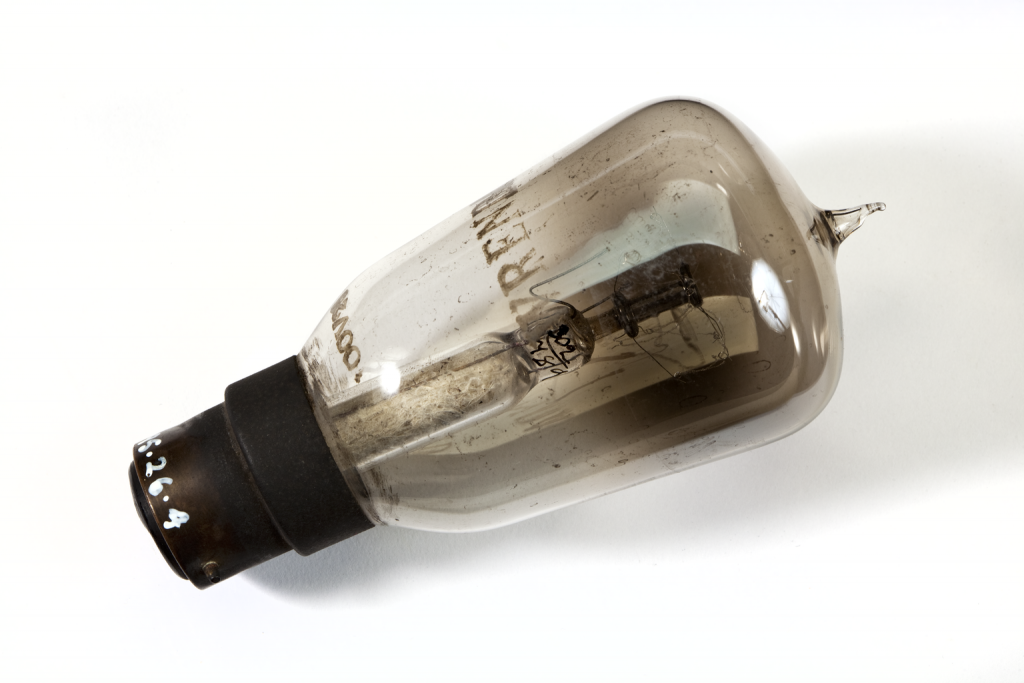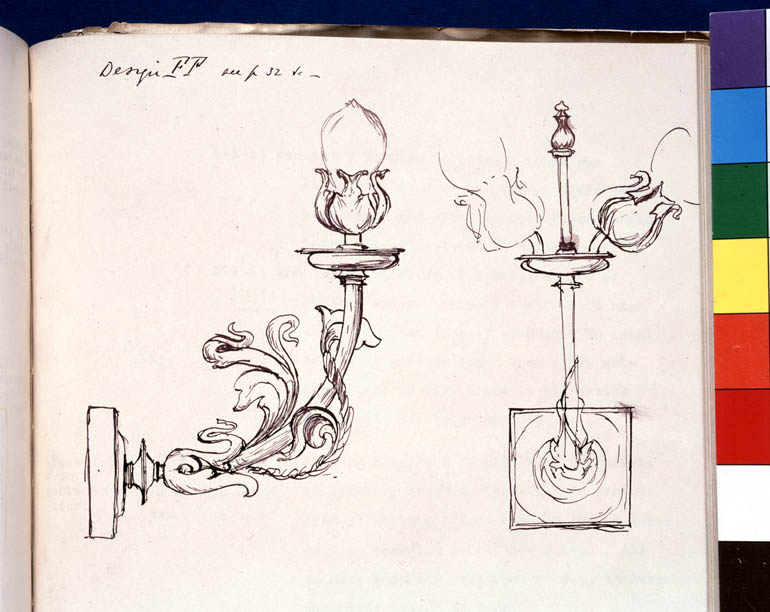 |
 |
 |
 |
 |
The most remarkable thing about the light bulbs pictured above (click each one to enlarge) is that they worked for over 90 years. They were installed in The John Rylands Library around the time it was opened to the public on 1 January 1900, and were reputedly in good working order when they were removed from the building in 1992–95. The museum collected 11 bulbs at that time.
Smog and soot clung to buildings in Victorian Manchester, darkening windows and making winter mornings gloomier. Architect Basil Champneys designed the library to let in as much natural light as possible, but it was recognised from the start that artificial light would often be required.
Most public buildings at the time had gas lighting, but for this project, started in 1890, electric lighting was chosen as a cleaner and safer option. Electric lighting had been installed in commercial premises in Manchester from 1882, and a positive impact on the health of employees had been observed, due to the absence of gas fumes or smoke. Electric lighting also reduced the fire risk to the irreplaceable library collections.
The specification for the proposed electrical installation, written in October 1893, required:
‘…Thoroughly complete and perfect Installation of Incandescent Lights… to be of 100 Volts or thereabouts and arranged in simple parallel… The Lamps, Lamp holders and Shades will be supplied, but the Contractor must properly fix and connect them up’.
It noted that provision should be made for at least 1,200 lights, in wall brackets and pendants. The appointed engineers, Richard Crittall & Co., London, submitted a scheme for 1,146 lights, with illumination comparable to modern 15W incandescent bulbs. The light fittings were fabricated in wrought gunmetal and bronze by JW Singer & Sons of Frome, Somerset, with a foliage design that complemented the tulip-shaped bulbs.

Two of the bulbs have no maker’s marks, but the another three were made by Osram, Royal Ediswan and Wrendal. We know very little about this last firm, so if you do, please get in touch in the comments form below. The unmarked bulbs have horseshoe and looped carbon filaments, and are probably the oldest and most original to the opening of the building. The others were not manufactured until later in the 1900s, with tungsten filaments in a squirrel-cage design. One bulb is half blacked to provide focused light.
So, this group of electric light bulbs probably served the readers and staff of The John Rylands Library for longer than a single lifetime. Perhaps they illuminated the desk of the ‘Red Earl’, the 5th Earl Spencer, a Liberal party politician who donated his collection of over 43,000 items to the budding library. Or perhaps they illuminated the foyer, generating remarks at the opening ceremony such as:
‘The exquisite work of the interior of the building was seen to great advantage under the brilliant installation of the electric light”.
Or that:
‘The appearance under electric light is neither so true nor so interesting as by daylight’.
Each of these (now vintage) bulbs, with their soft, steady, warm yellow light, played a part in this grand new scheme of electric lighting.
With thanks to The John Rylands Library for access to the archive records.
Light bulb images copyright: The Board of Trustees of the Science Museum
Light bulb sketch copyright: The University of Manchester
I have an early Marconi light bulb – pointed top, filament apparently intact, bayonet fitting. Marked Marconi on the glass below a roundel with the capital letters BTH (possibly BTN). Also marked 230V 8C and another letter which I can’t read.
Only a question of time before it gets broken if it stays with me although wrapped up in newspaper dated 1973 so it’s had a charmed life so far!
Should this be in better hands? Not looking for any payment – just a safe home.
Very interesting article.
I suppose that before incandescents illumination was measured in the number of candles one had lit at any time. Can one establish what the average home illuminance (lumens per metre square) would have been through the years?
You say (above) that in 1889 one bulb would be equivalent to a 15W incandescent of today.
I would be most interested to know, if this is something that you can advise on, please.